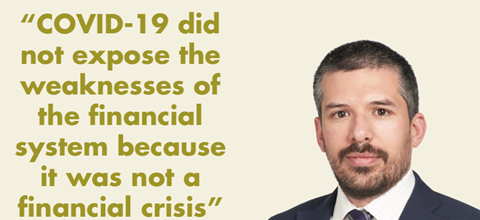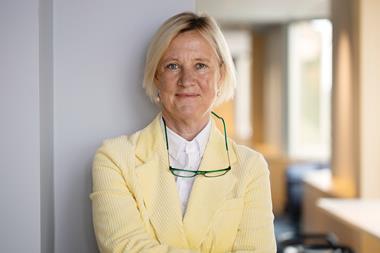The financial system seems to have coped well with COVID-19. This is despite the repeated recent warnings about a build-up of systemic risk. In turn this has been linked to the abundance of cheap debt and the growth of the asset management industry.
An unforeseen event such as COVID-19 may have triggered a crisis but after crashing in March 2020, the markets recovered quickly.
Equities continued to rise throughout 2020, with the three main US indices – the Dow Jones Industrial Average, the S&P 500 advanced and the Nasdaq Composite – all setting record highs. More importantly, there were no instances of forced asset sales bringing institutions to their knees.
Many attribute this apparent resilience to central bank and government intervention. Central banks have expanded their quantitative easing (QE) programmes. By last June, global governments had mobilised over $10trn (€8.2trn) in fiscal stimulus. In Europe, the EU’s €750bn recovery instrument, NextGenerationEU, gives hope that the recovery will have depth.
Investors, particularly pension funds, deserve credit too. During a volatile 2020, they remained long-term investors. This helped maintain calm in the market.
However, COVID-19 did not expose the weaknesses of the financial system because it was not a financial crisis. It was a health crisis, which engulfed the real economy. The financial system was insulated by policymakers, who chose to keep flooding the market with liquidity.

There are signs that the financial system could be in bad shape. The gulf between markets and the real economy is one. Markets are betting on a swift recovery without any certainty that COVID-19 will be over soon and that the damage will be repaired quickly.
Another key indicator is the rising levels of global debt. According to the Institute of International Finance, debt in developed economies reached a record 432% of GDP, having added 50 percentage points from 2019.
IPE’s conversations with prominent European pension funds suggest investors are aware. They are implementing sound risk management strategies. In addition, they are keeping abreast of the development of systemic risk and reflecting on their role in averting a real financial crisis.
The hope is that this new debt is a worthy price to pay to maintain social cohesion. While policymakers’ preoccupation with social welfare is commendable, a share of debt has probably been allocated to unproductive or risky assets and projects.
At the same time, while COVID-19 was a stress test, it was not one that signals overall poor health of the financial system.
Carlo Svaluto Moreolo, Senior Staff Writer,
carlo.svaluto@ipe.com


















1 Reader's comment